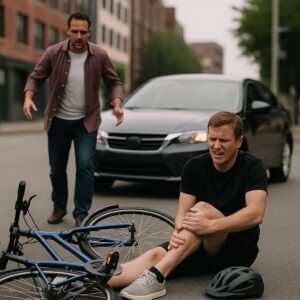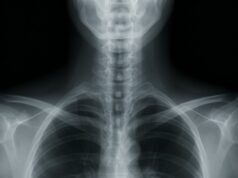Getting into a bike accident can turn your life upside down in a matter of seconds. Whether it’s a careless driver, a pothole that came out of nowhere, or a tangle of unclear traffic laws, the aftermath can feel overwhelming. But knowing your rights—and what to do next—can make a huge difference. In this article, we’ll walk you through the common causes of bike accidents, who’s usually at fault, what steps to take if you’re ever hit, and how to protect yourself legally and financially. If you ride regularly (or even just once in a while), this guide is for you.
1. Why Bicycle Accidents Happen So Often
Bike crashes happen more often than most people realize—and usually, they’re not just “accidents.”
• Drivers Not Paying Attention
The truth is, drivers often don’t see cyclists—or don’t respect their space. Common issues include speeding, texting, or failing to yield when they should.
• Bad Road Conditions
Rough roads, missing signage, debris, or the absence of a bike lane can quickly lead to disaster. In some cases, the city or county could actually be responsible if they failed to maintain the road.
• Visibility and Rider Mistakes
Cyclists can sometimes add to the danger—riding against traffic, not using lights at night, or ignoring traffic signals. These mistakes don’t excuse a driver’s behavior, but they can complicate legal matters.
2. Figuring Out Who’s at Fault
Fault matters a lot in a legal case. It’s what determines who pays what.
• Shared Responsibility
In many states, the law allows fault to be split between both parties. So, if a cyclist is found 25% responsible, their settlement might be reduced by 25%.
• What Helps Prove Your Case
Key evidence includes police reports, witness info, traffic cam footage, and pictures from the scene. Collect whatever you can as soon as you’re able.
• What the Law Says
Both drivers and cyclists are expected to follow traffic laws. If someone breaks those rules, that often determines who’s responsible.
Quick Look: Responsibilities
| Task | Driver | Cyclist |
| Stop at red lights | Must stop | Must stop |
| Use of bike lanes | Must not block or drive in | Should use when available |
| Signaling turns | Required | Required |
3. Why Bicycle Accident Stats Matter
Numbers don’t lie—and they show just how dangerous the roads can be for cyclists.
In recent years, over 1K bicycle riders were killed in the U.S. alone—a troubling trend worth understanding.
Most of these crashes happened in cities, and younger riders (ages 10–24) are often the ones getting hurt. Fatal accidents tend to spike at night, especially in areas without proper lighting or bike infrastructure.
Looking at these trends helps not just with raising awareness—it also supports legal arguments that more needs to be done to protect cyclists.
4. What to Do Right After a Crash
If you’ve been in an accident, your first instinct might be panic or confusion. That’s normal. But here’s what to focus on:
- Stay safe and get medical help. Even if injuries seem minor, call 911. Some symptoms take time to show up.
- Document everything. Take photos, get witness names, write down exactly what happened and when.
- Avoid admitting fault. Stick to the facts when talking to police or others on the scene.
5. Protecting Yourself Legally
Once you’ve had a moment to breathe, it’s time to protect your rights.
• Be Careful with Insurance Adjusters
They may seem helpful, but their goal is often to save money—not help you. Don’t sign anything or give recorded statements without legal advice.
• When to Call a Lawyer
If there are injuries, major damages, or insurance isn’t cooperating, getting a lawyer is smart. They can handle paperwork, negotiate on your behalf, and help you meet deadlines.
• Know the Clock’s Ticking
Each state has a deadline (called a statute of limitations) for filing a claim. Here are a couple of examples:
| State | Time Limit |
| California | 2 years |
| New York | 3 years |
6. What Kind of Compensation Can You Get?
If the crash wasn’t your fault, you might be entitled to more than you think:
- Medical bills
- Lost income
- Bike repair/replacement
- Pain and suffering
- Ongoing rehab or care
How much you get depends on the severity of your injuries, how the crash happened, and how well you’ve documented everything. Things like wearing a helmet or using lights can also affect your claim.
7. Staying Safe in the Future
Prevention is key. Here’s how to lower your risk:
- Always wear a helmet and reflective gear
- Use lights if riding at night
- Follow traffic laws—ride with traffic, not against it
- Keep your bike in good shape
- Make sure drivers can see you
The more visible and predictable you are on the road, the safer you’ll be.
Final Thoughts: Protecting Your Rights Starts with Knowledge
No one expects to be in a bicycle accident. But if it happens, being prepared makes a big difference. Know your rights, act quickly, and don’t be afraid to ask for legal help. At the end of the day, your safety on the road and recovery are what matter most—and you deserve both.







